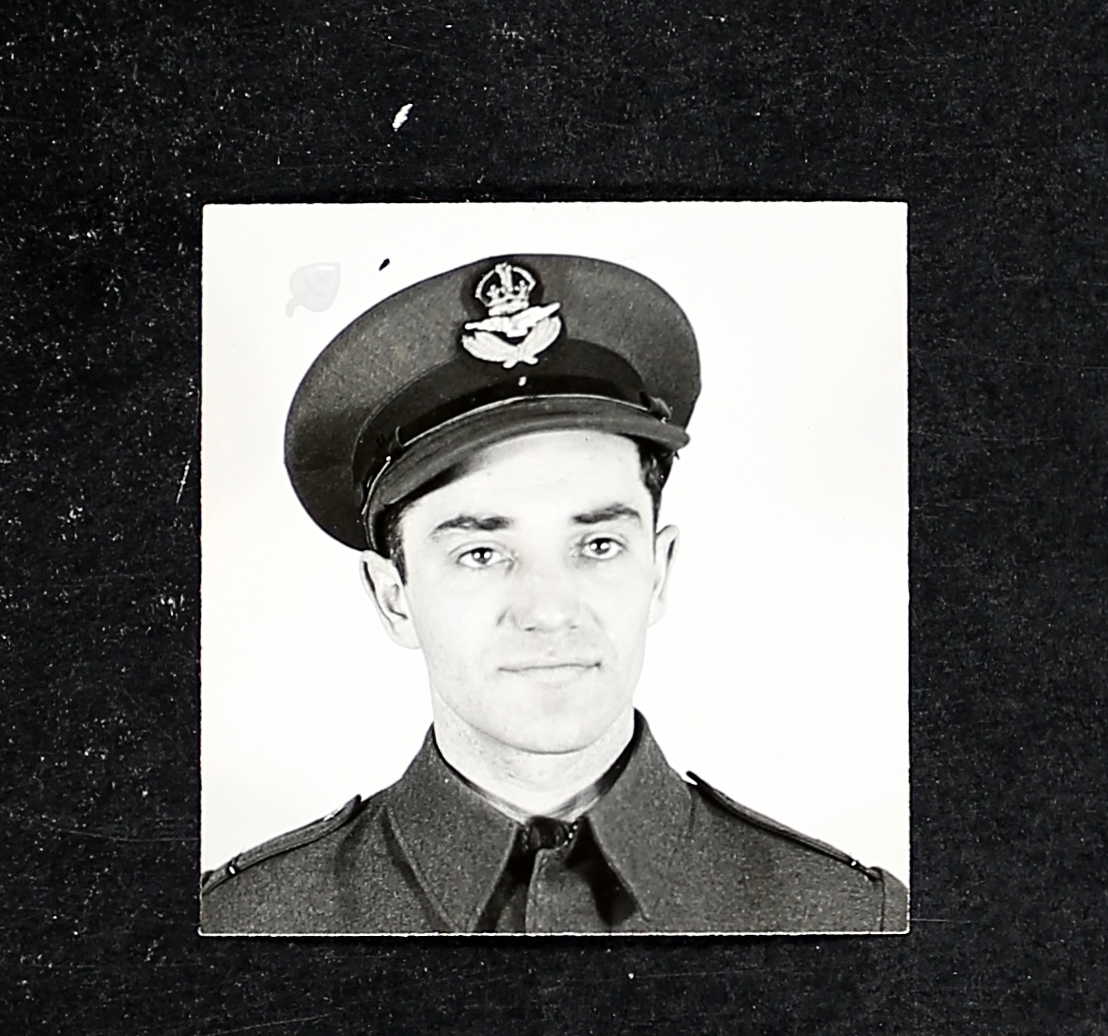

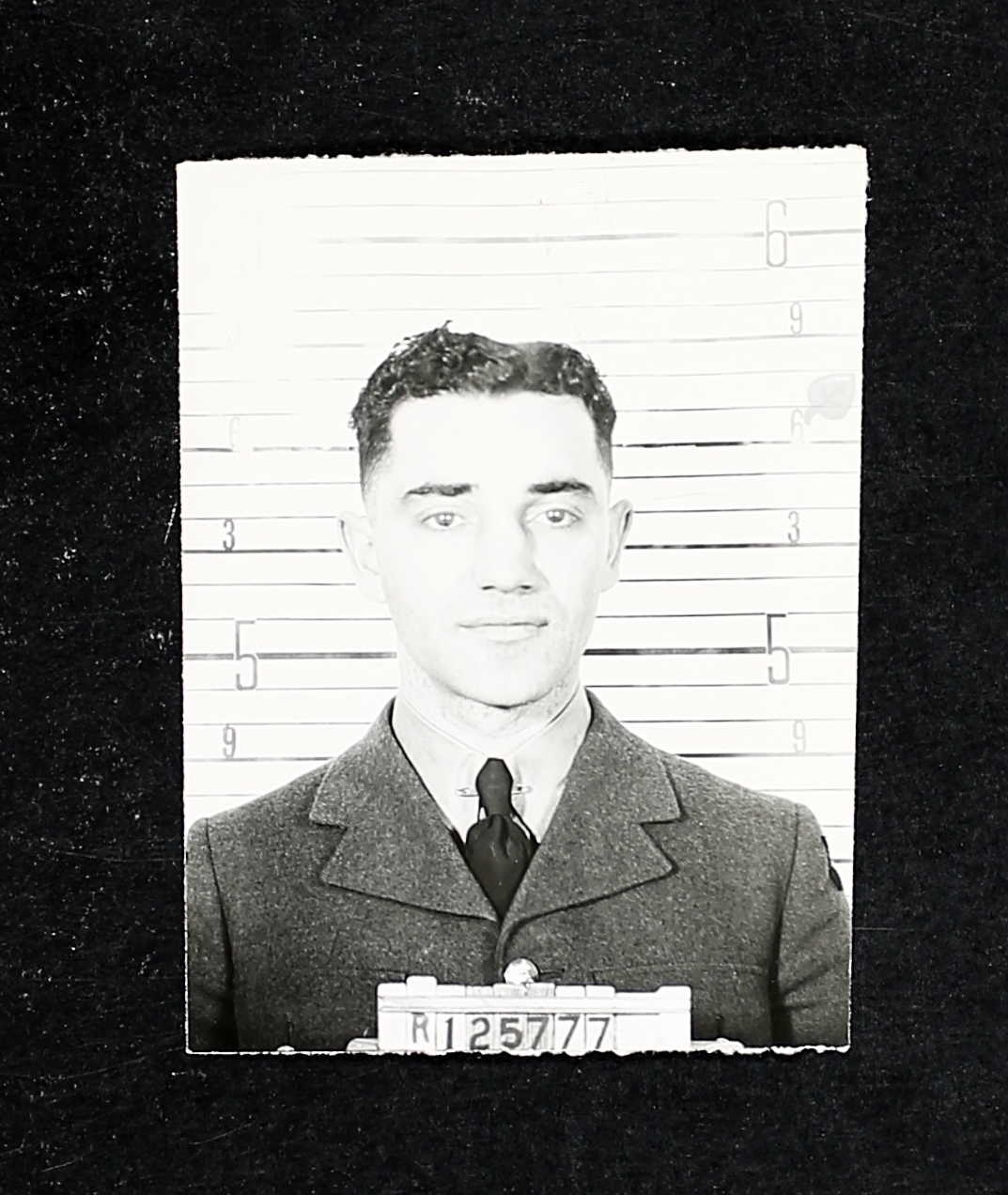
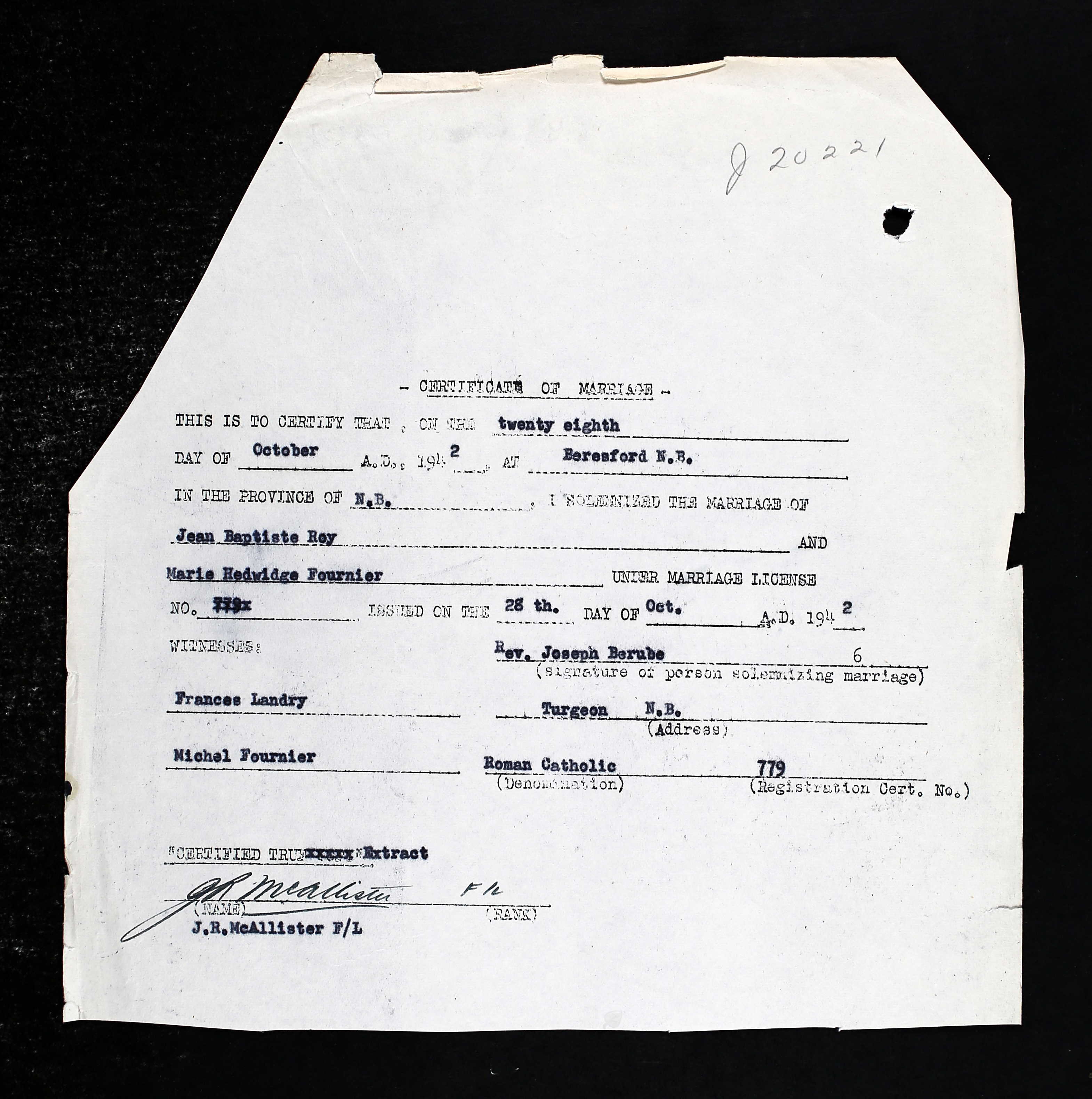
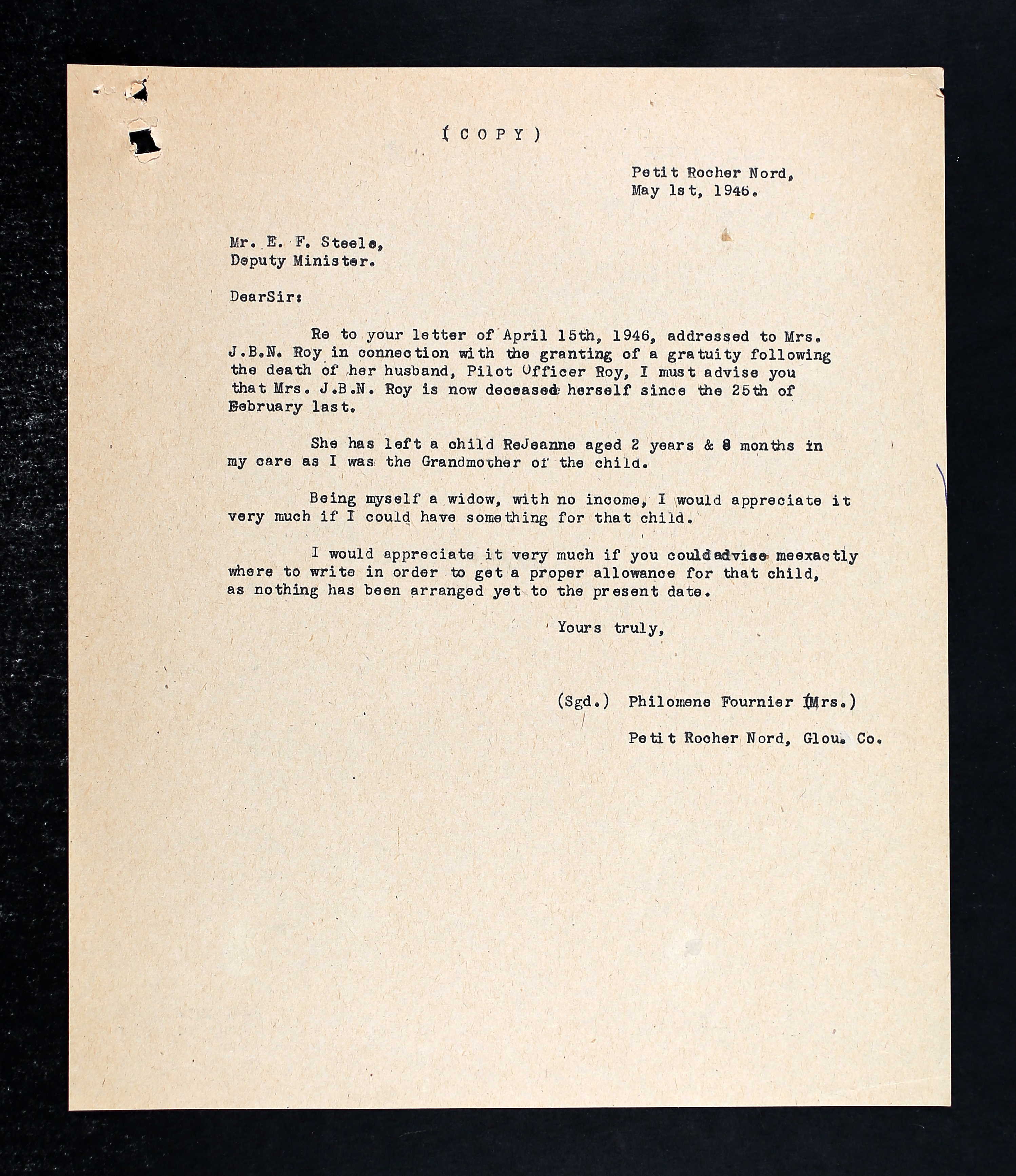
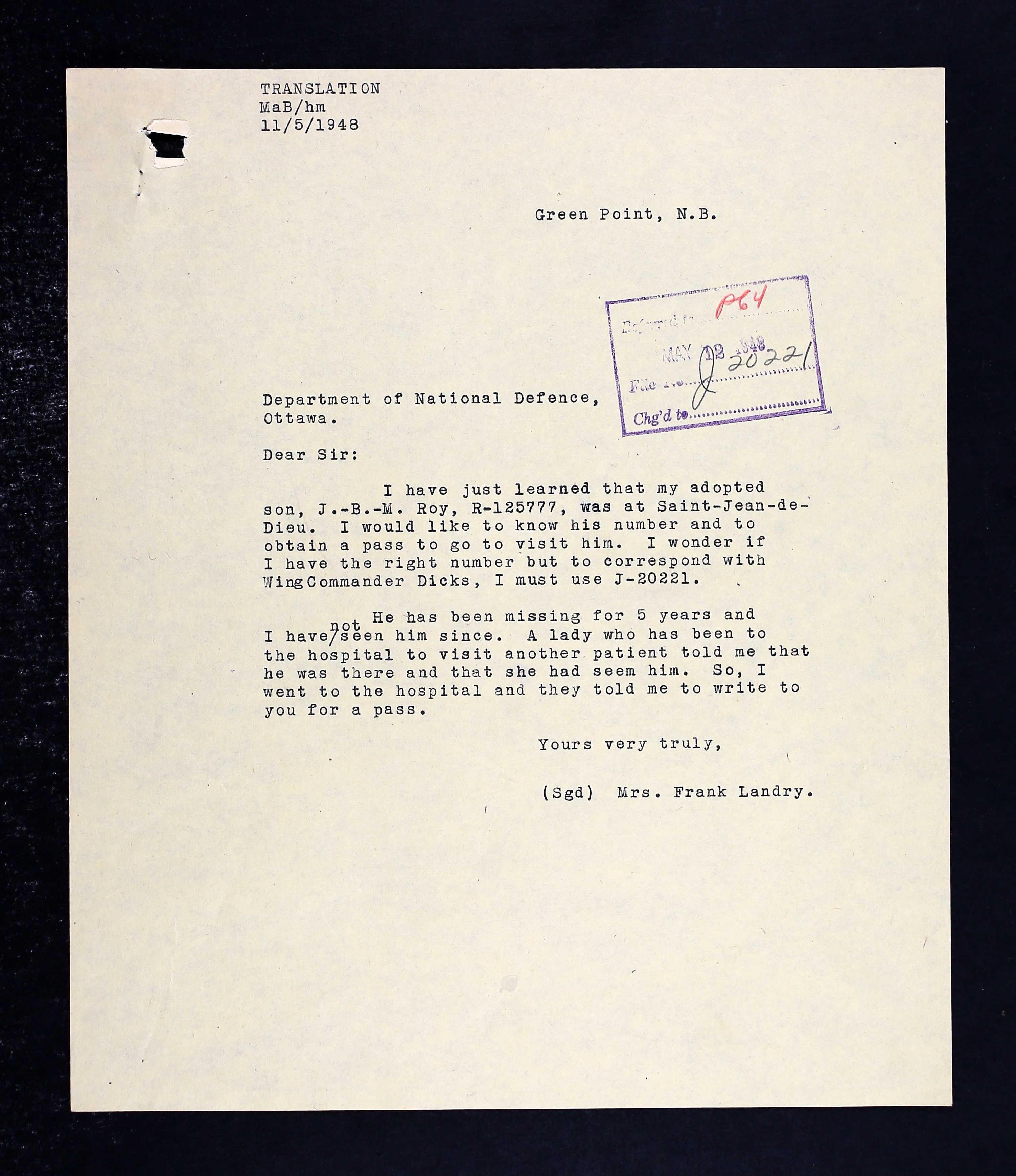


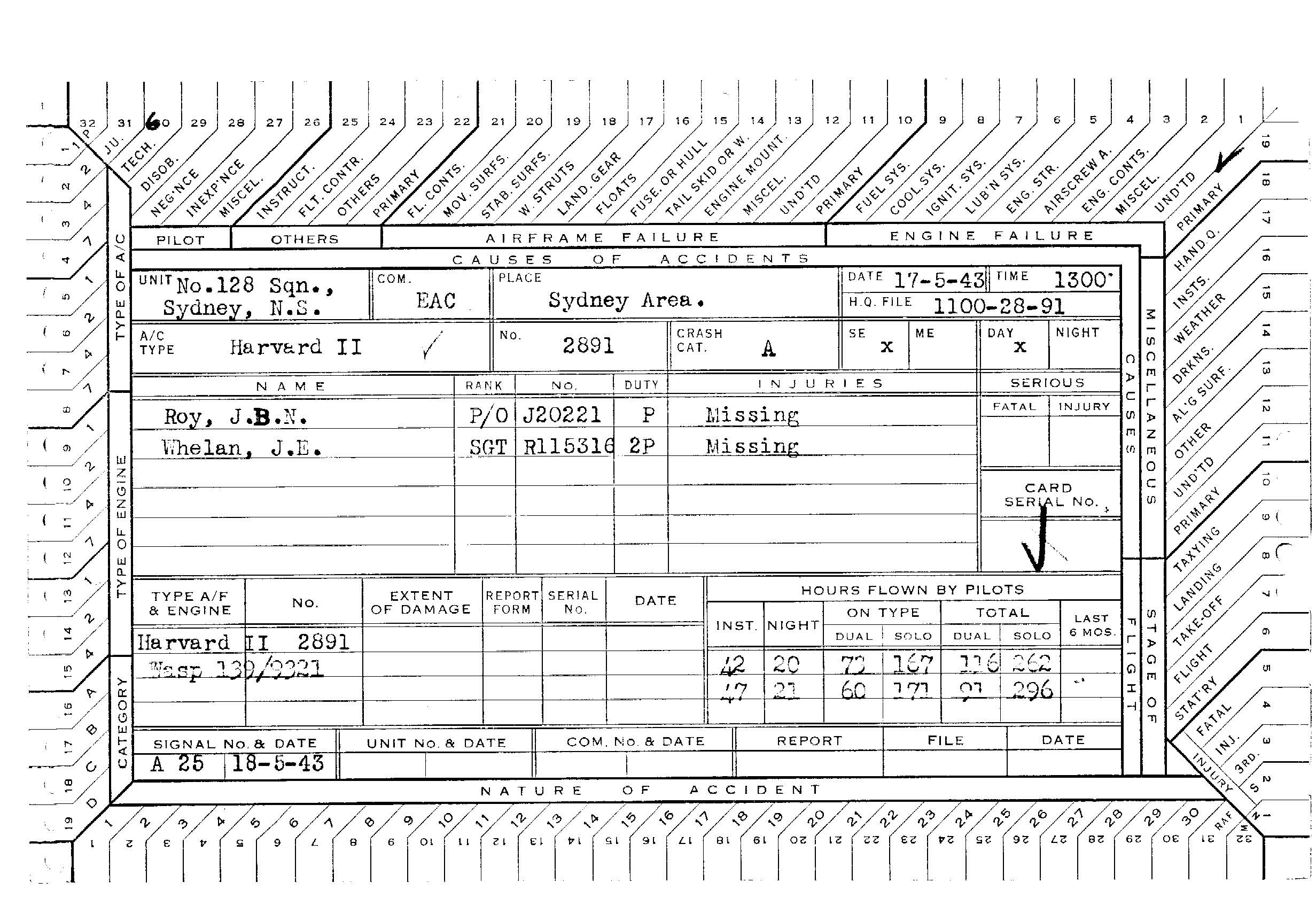
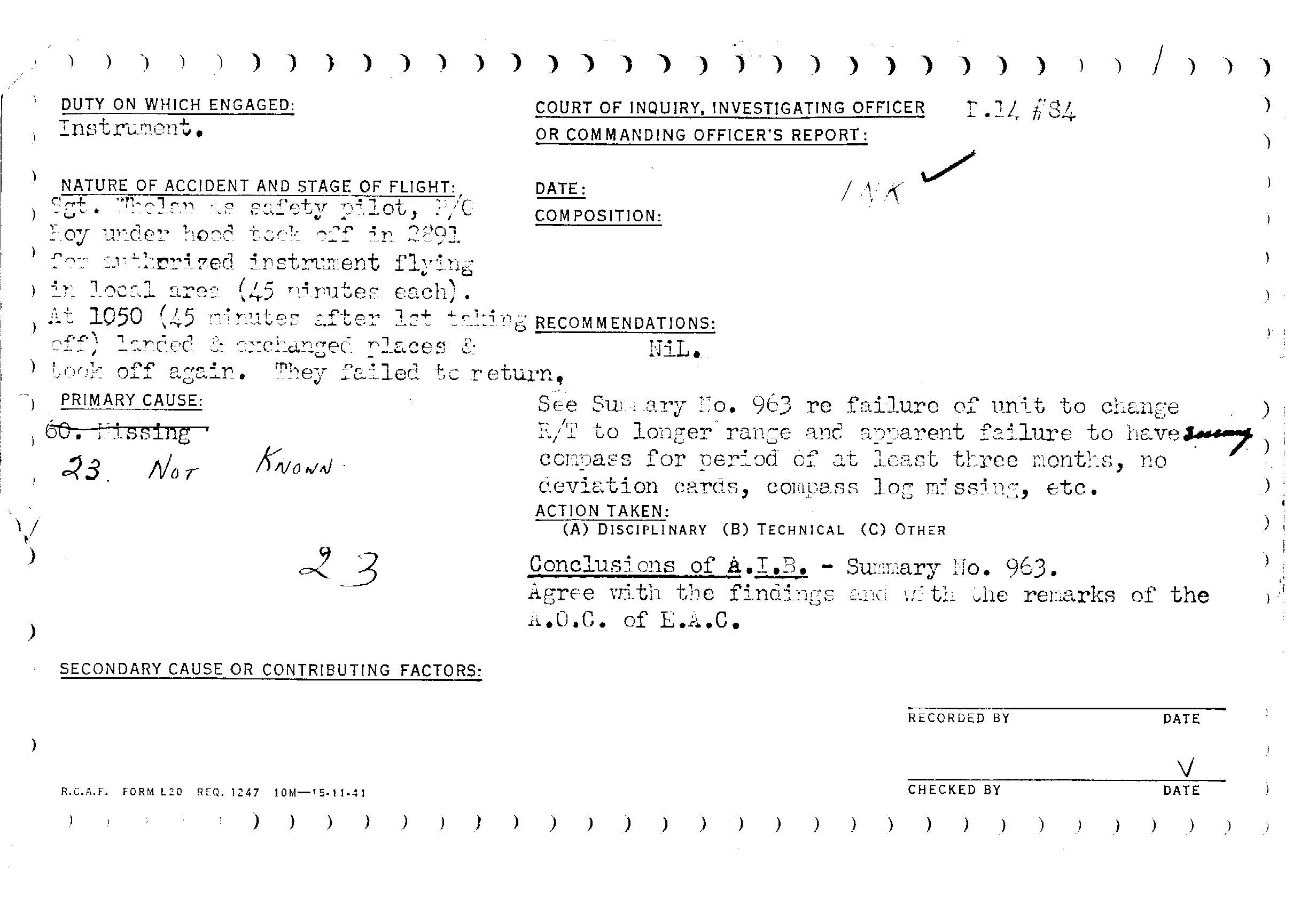
July 20, 1914 - May 17, 1943










Jean-Baptiste Normand Roy, born in Petit Rocher, New Brunswick, was the son of Gaudiose Roy (d. October 31, 1916) and Albina Roy (d. August 5, 1927), the adopted son of Mr. and Mrs. Francis (Frank) George Landry of Pointe-Verte, New Brunswick. Jean listed his brother, Edmond, of St. Omer, Quebec, to be his next of kin as both parents were deceased when Jean enlisted in the RCAF in September 1941 in Ottawa. He also had a sister, Bertha Roy Arpin, of Windsor, Ontario. The family was Roman Catholic. “After the death of his father, my husband was adopted as a child at the age of 3 years, by M. and Mrs. F. G. Landry of Green-Point, who cared for him, gave him his education and were really his adopted parents for all his necessities of life until he could earn his living,” wrote Marie Roy, wife, in January 1944.
Known as Normand, he was fluently bilingual in French and English. He had his B. Commerce from St. Joseph’s University, working as a clerk and bookkeeper since 1932, with some typing at one position, then moved to Ottawa and was a clerk in the Agricultural Department from 1939-1941, known there as John Norman Roy. He liked to play baseball, hockey, and swam. A vaccination scar the size of a 50c piece was noted on his left arm. He had brown eyes and brown hair, with a dark complexion. He stood 5’7” tall and weighed 138 pounds. He smoked 10 cigarettes a day and drank alcohol very occasionally. “Excellent aircrew material. Good knowledge of English. Polite, personable, should do well. Fit in every respect.”
Normand started his journey through the BCATP at No. 1 Manning Depot, Toronto, November 1, 1941. He was then taken on strength at No. 31 O.T.U., Debert from November 21 1941 until January 26, 1942 when he was sent to No. 3 ITS, Victoriaville, Quebec until April 11, 1942. “Good educational background, serious, industrious, studious, intelligent.” He was 14 out of 59 in his class with 89%.
From there, the was sent to No. 11 EFTS, Cap de la Madeleine, Quebec April 12 until July 4, 1942. “Very good all around. Above average ability in Ground. Quiet and serious.” He was 11th out of 37 in the class with 76.2%. He was then sent to No. 13 SFTS, St. Hubert, Quebec until November 6, 1942. “Above average pilot; good instructor material.” GROUND: “Excellent type, serious and intelligent; hard worker; well above average in GIS.” Additional comments: “Has done very well in Ground subjects. Intelligent and well qualified. Still a little shy. High average pilot who should do good with experience.” He earned his sings on October 23, 1942.
Normand married Marie Hedwidge Fournier in Beresford, NB, on October 28, 1942. She continued to reside in Pointe-Verte, NB. They had a daughter, Marie Normande ReJeanne Roy. They had lived in Sydney, NS at the time of the accident.
Normand was then sent to No. 31 GRS, Charlottetown, PEI until December 11, 1942. He was taken on strength at No. 1 O.T.U. Saguenay, Quebec for one day before being sent to No. 128 Squadron, Sydney, Nova Scotia April 16, 1943.
Aboard Harvard 2891 from 128 Squadron, F/O Jean B. N. Roy, J20221, RCAF, was lost on May 17, 1943 along with F/S John Edward Whelan, R115316, RCAF. P/O Roy was the Captain of the aircraft and F/S was the co-pilot.
The Halifax Herald article dated May 25, 1943: MISSING AIRMAN IN CAPE BRETON ONLY ONE MONTH. Sydney, May 24: Pilot Officer Jean Baptiste Norma Roy, 28, RCAF, member listed tonight as missing while on active service in Canada, is a native of Bathurst, Nova Scotia. He came to Cape Breton a month ago from an air force station in Quebec. His wife, whose address is given as 217 St Peter Road, Sydney, came here with him but returned a few days ago to Bathurst, accompanied by his foster mother, Mrs. Frank Landry who adopted Pilot Officer Roy when he was two years of age.”
The Court of Inquiry was held on May 25-26, 1943, at Sydney, Nova Scotia. Eleven witnesses were called. Please visit John Edward Whelan’s page for the documents.
Both pilots received verbal instructions before they left and they were to fly for 45 minutes on instruments each. F/O Roy was under the hood first, with Sgt. Whelan acting as safety pilot in the front seat. At the end of 45 minutes, they changed places. The aircraft took off at 10:05, landed, changed places at 1050 and took off again at 1050 hours. The plane was noted overdue by 1215. “Immediately, all efforts possible were made to contact the aircraft by R/T. Upon failing to do so, S/L Michalski organized a search consisting of two Hudson aircraft which were sent to search for this aircraft,” stated F/O H. M. O’Hair (C12546), Flight Commander 128 Squadron, Sydney, Nova Scotia. He rated the pilots’ abilities as follows: “average in ability and both steady, clean living boys. P/O Roy had not any previous crash to my knowledge but Sgt. Whelan had had one crash in a Hurricane aircraft. Both should have been competent to cope with any situation…an exhaustive search has been carried out with varying numbers of aircraft ever since Harvard 2891 was missing and no trace has been found.” The two pilots who flew Harvard 2981 prior, F/O William Gould and his brother, LAC Gould, and stated that the aircraft was serviceable “in all respects. Its radio was exceptionally good. I did not use the compass on this trip, but I did use it on the 25th of April on a flight to Dartmouth and found it accurate.” The third witness, Mr. L. A. Hillgartner, meteorologist, RCAF Station, Sydney, NS stated that carburettor icing was possible but not probable. “Weather maps and forecasts are provided for pilots making cross-country flights or on patrol. Forecasts and maps are not provided for local flight such as this case although the Squadron Commander or the pilot himself has generally checked up on the weather for that day.” The fourth witness, P/O G. E. Anderson, C13526, Officer in charge of Servicing Squadron, Maintenance Wing, RCAF Station, Sydney, NS stated “It is a complete mystery to me [as to the probable cause of Harvard 2891 failing to return] as the aircraft was in a serviceable condition on take-off.” The fifth witness, F/L C. D Donaldson C14268, Medical Officer stated that Sgt. Whelan “in March 1943 was given a B2 examination. He was then in good physical and mental health…In March 1942, at No. 8 SFTS, he was hospitalized for five days, diagnosis urethritis non-specific. He was discharged to duty. He has had no further service record of illness or disease. P/O Roy from our medical records, was in good physical and mental health. He has no service record of hospitalization…There is nothing to suggest that these pilots were unduly fatigued at the time of their last flight.” The first witness, F/O O’Hair was recalled and stated that the aircraft’s compass was “last swung to the best of my knowledge about three months ago.” The tenth witness, S/L W. J. Michalski, C1584, Deputy Controller, RCAF Station, Sydney, NS said that in his opinion what could have caused the accident was “Firstly, very poor map reading. Without prejudice to any pilot, it seems to me as if the pilots in fighter squadrons have a superiority complex. It is therefore suggested that for safety’s sake, that all fighter pilots report their positions over twenty minutes on either Control Tower frequency or fighter control frequency. This also pertains to local flying. May it be pointed out that since May 21, 1942, Sydney H/F D/F Station has been in use and we have been experimenting insofar as homing of fighter aircraft to their Sydney Base on frequencies 3017.5 and 4777.5. As yet, it is not very satisfactory, but improvements are being made to give full cooperation to the fighter aircraft. Until such time as the fighter Sector Control will be fully equipped and be able to plot and control fighter aircraft, the Station BR Controller will govern fighter aircraft excepting in the case where Tactical exercises are being carried out with the Fighter Control Sector.”
“CIRCUMSTANCES: Alternating instrument flying exercise. Aircraft landed for pilots to change seats. Immediately took off and did not return. The exercise should have been confined to a radius of 30 miles. CAUSE: Obscure. P/O Roy and Sgt Whelan were on active service carrying out Air Force duties and were flying Harvard 2891. Took off at 13350 hours from RCAF Station, Sydney, NS are missing and must presumed dead.”
FINDINGS OF THE COURT: “the finding of the investigation officer is can curd in. It is noted, however, that the aircraft was being controlled by the tower, whose R/T transmission on 3017.5 is known to be of much shorter range than transmissions on 4777.5 by fighter control. It therefore seems that there was bad organization on the part of Sydney station in not changing over to fighter control as soon as the aircraft was airborne. It is also noted that there was apparent negligence concerning the compass; there were no deviation ____, the compass log was lost and it appears that the compass had not been swung for at least three months. The failure to maintain R/T communication was not the cause of the accident but if communication had been maintained, the pilot might have been able to send out an SOS which would have led to his being found. If the compass was faulty, this may have had some bearing on the accident, although it seems unlikely as the flight was supposed to be strictly local. The station is being required to account for both of these apparent failures.”
Marie died February 25, 1945, leaving ReJeanne, aged 2 years and 8 months with her maternal grandmother, Mrs. Philomene Fournier, Petit Roche Nord, Glouchester County, New Brunswick. Mrs. Fournier wrote to the Deputy Minister, Mr. E. F. Steele, requesting an allowance to help support herself and granddaughter, as Mrs. Fournier was a widow.
In May 1948, Mrs. Landry, Normand’s adoptive mother wrote a letter to the Department of National Defence in Ottawa requesting that she be able to visit him at Saint-Jean-de-Dieu. “He has been missing for five years and I have not seen him since. A lady who has been to the hospital to visit another patient told me that he was there and that she had seen him. So, I went to the hospital, and they told me to write to you for a pass.” She received a reply. “I am sure that this is not correct as there has been no information concerning P/O Roy, his companion on the flight, or the aircraft since they took off from the Station at Sydney, NS…Unfortunately, there is no information that Pilot Officer Roy is confined to this hospital.” She was asked to provide the name and address of the woman who provided the erroneous information.
In late October 1955, Mme Frank Landry received a letter, in French, informing her that since Normand had no known grave, his name would appear on the Ottawa Memorial.
LINKS: